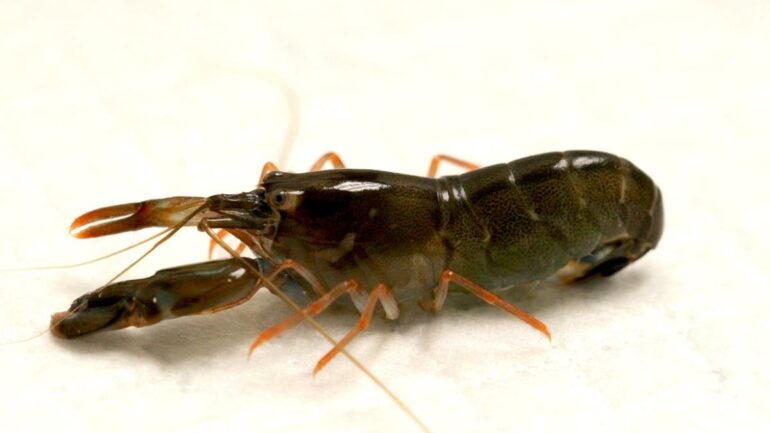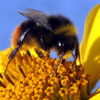When it comes to a quick draw, few creatures outgun adult snapping shrimp (Alpheus heterochaelis). They stun passing fish and foes with a simple click of a spring-loaded claw, which squirts a high-speed jet that rips through the water, producing a vapor-filled bubble (a cavitation bubble) that then implodes, resulting in a catastrophic shock wave—complete with a sharp popping sound and minute flash of light—to incapacitate their opponent.
“We can’t see the bubble with our naked eyes, it happens too fast, but we can hear when the bubble collapses,” says Jacob Harrison at Georgia Institute of Technology, U.S.. The adult shrimp’s claws crash together at blisteringly fast speeds up to 30 m s−1 and the entire process is over in less than a millisecond. But at what point in their growth do snapping shrimp develop their hair trigger claws, when are they capable of squirting a jet that can rip water asunder and how does their performance compare with that of their parents?
As a graduate student in Sheila Patek’s Duke University laboratory, Harrison become surrogate parent to a troupe of developing snapping shrimp and discovered that the shrimp youngsters are capable of accelerating their upper claws in water as fast as a bullet from a gun and 20 times faster than their parents. He has published his discovery that snapping shrimp youngster’s claws are the fastest accelerating reusable body part in water in Journal of Experimental Biology.
Having collected four snapping shrimp females carrying eggs from the mudflats off Beaufort, North Carolina, U.S., Harrison nurtured the shrimp youngsters after hatching, keeping track of their growth, until they began snapping their claws at around the age of 1 month.
“I couldn’t see it, but I began to hear it,” says Harrison, who filmed the youngster’s claw clicks under a microscope at 300,000 frames s−1 over a 3-week period to capture every detail of the lightning-fast maneuver as the crustaceans matured. “I had to annoy them with a toothpick, so they would snap,” he chuckles. After filming more than 280 claw snaps, Harrison began painstakingly reconstructing 125 of the maneuvers to calculate the acceleration of the claws as they crashed closed, the amount of energy used and the power required to produce the water jet.
Incredibly, even the tiniest snapping shrimp—with claws that were only 1mm long and weighing just 0.03mg—could occasionally squirt a jet of water producing an explosive cavitation bubble. “I was completely ecstatic. This snapping shrimp was about the length of a staple and it could move fast enough to cavitate water,” says Harrison. When he calculated the acceleration of the minute top claw as it closed down on the lower claw, he was astonished that it was reaching an acceleration of 580,000m/s2—as fast as a bullet and ~20 times faster than the adult’s claw—while rotating at more than 1,500,000deg/s (250,000 rpm).
“It is the fastest recorded acceleration for a repeatable, underwater motion,” says Harrison, although he explains that that Dracula ant jaws accelerate faster in air and firing jelly fish sting cells accelerate faster in water, but they are destroyed each time they are triggered.
Next, Harrison calculated the power required to produce such an impressive explosion, and it came in at ~65,000,000W/kg of muscle, far exceeding the 1200W/kg measured for the most powerful bird flight muscle. Only a catapult, storing energy and then releasing it instantaneously, could produce such an explosive jet of water.
So, snapping shrimp develop the ability to snap their claws closed, producing a cavitation bubble, a little over a month after they hatch, achieving astonishingly fast accelerations that far exceed those of their parents. But Harrison suspects that the youngsters have to fire a few blanks before they build up to producing cavitation bubbles.
“Juveniles may be ‘practicing’ their strikes,” he suggests, explaining that the youngsters may need to lock and load a few times to build up until they are capable of reliably releasing their ballistic cavitating water jets.
More information:
Developing elastic mechanisms: ultrafast motion and cavitation emerge at the millimeter scale in juvenile snapping shrimp, Journal of Experimental Biology (2023). DOI: 10.1242/jeb.244645
Provided by
The Company of Biologists
Citation:
Young snapping shrimps’ tiny claws accelerate in water like a bullet (2023, February 28)



